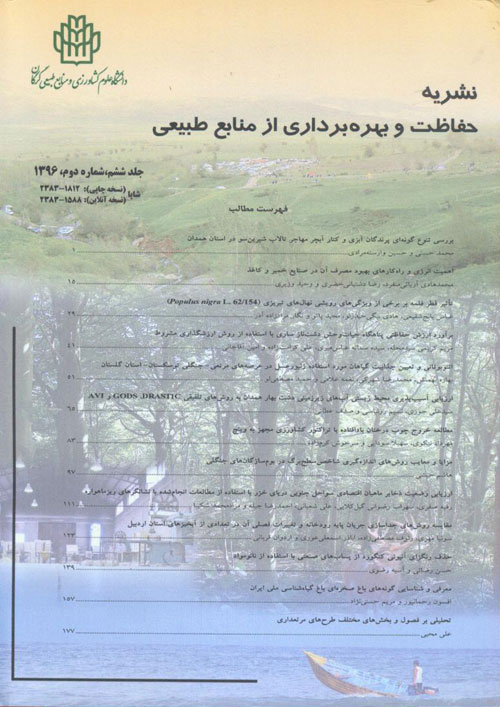Occurrence of Charcoal disease (Biscogniauxia mediterranea) in oak forests
Author(s):
Abstract:
Background And Objectives
Biscogniauxia mediterranea as an opportunistic fungus and cause of Charcoal disease is a major problem in the oak forest stands with Mediterranean and sub-Mediterranean climate. For the first time in Iran charcoal disease was observed in 2011 in Hyrcanian and Zagros forests on the species of Quercus castaneifolia, Zelkova carpinifolia, and Q. brantii, respectively. However there is not accurate information about the risks and threats of this disease in the country's forests. Materials And Methods
This research focuses on evidences and effective pattern on presence, spread and comprehension of processes and interaction of charcoal disease agent with forest trees and finally its control and management methods.Results
Symptoms of B. mediterranea cankers include the reduced canopy crown volume, dry branches and pieces of the bark around tree. Many factors, such as defoliation, saturated soil moisture, soil compaction and removal, excavation within the root crown, drought, ground water table drop, nutrients limitation, competition or high density of trees and dust can cause ecosystem weakness and spread of the disease. There is not an efficient method to control the disease except to cut and remove the infected trees from forest. But the most effective management strategy is to avoid stress on trees, so that trees can improve their ability to defend themselves against the disease. Few in vitro studies have been performed via antagonistic fungi for biological control of disease, but no effective method in forest ecosystem has been reported.Conclusion
Most likely the forests are affected by stress due to climatic change; therefore, the effects of climate changes on healthy forests should be carefully evaluated. The climate changes cause pathogens outbreak and migration and introduction of new hosts and potential vectors. These factors increase outbreak and spatial distribution of forest trees diseases. Therefore because of the severe damage of this disease to forests in north and west of Iran, more comprehensive studies should be done in these forests to provide useful approaches to control oak charcoal disease. Keywords:
Language:
Persian
Published:
Journal of Conservation and Utilization of Natural Resources, Volume:5 Issue: 1, 2016
Pages:
53 to 72
https://magiran.com/p1647716


